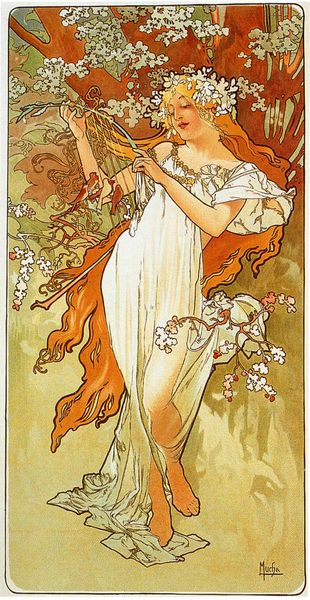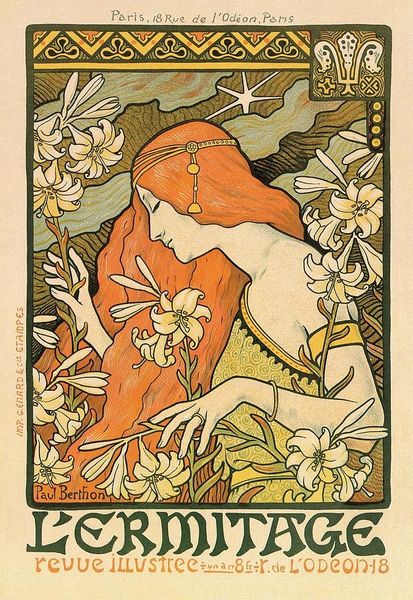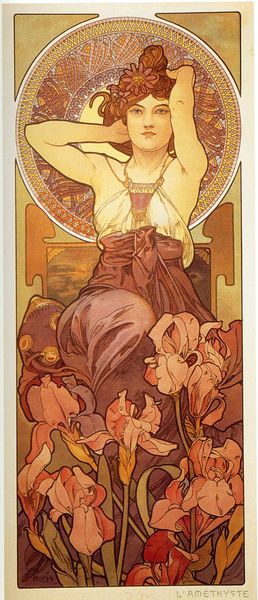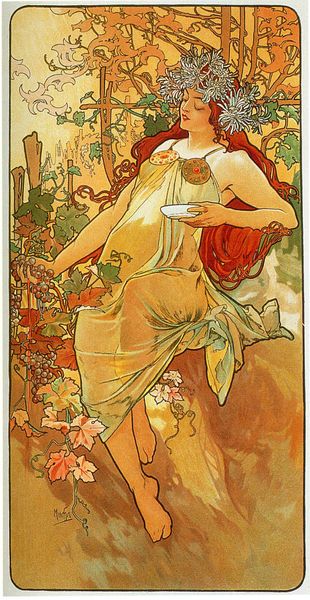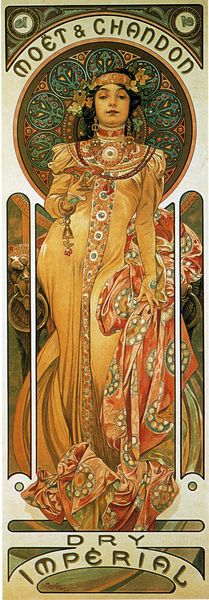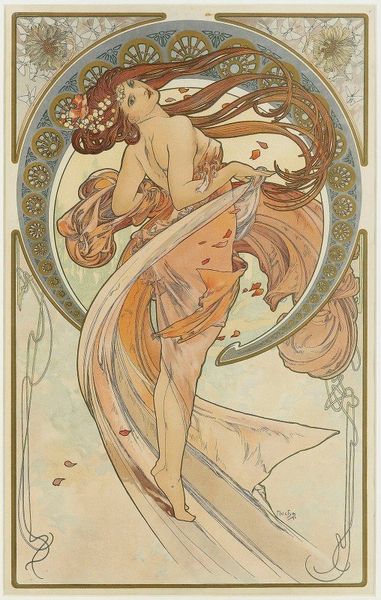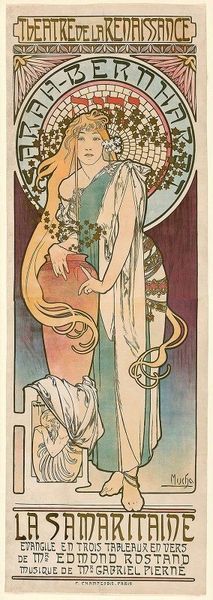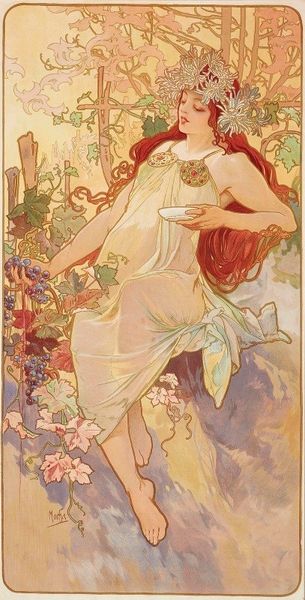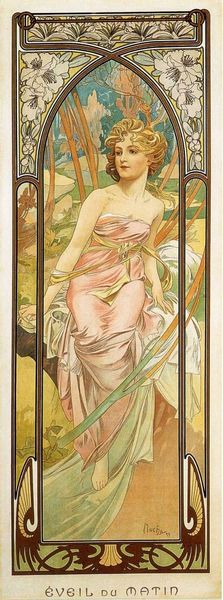
painting
#
portrait
#
art-nouveau
#
painting
#
landscape
#
flower
#
plant
#
art nouveau
#
female-portraits
Copyright: Public domain
Curator: Let's turn our attention to "Topaz," a work by Alphonse Mucha created around 1900. Editor: Immediately, the amber and ochre hues evoke a sense of warmth, almost like a comforting autumnal afternoon. I notice the incredible detailing—particularly the way he's rendered the flowers. What was the intended context for such a composition? Curator: Mucha was deeply embedded in the Art Nouveau movement, emphasizing decorative beauty and craftsmanship. The image functions as an allegorical portrait, part of a series featuring gemstones. In this work the subject is closely related to floral designs. Editor: The emphasis on lithography as a printmaking process fascinates me; its capacity for detail is displayed here quite cleverly in order to render the woman's ornate hair and jewelry. The labor intensive and layered nature of the process allows him to incorporate fine details that elevate it above a mere mass-produced commercial object. It feels, and is crafted with incredible precision. Curator: Absolutely. The composition, however, follows a structured approach: The vertical format is compartmentalized into background, the woman, and the lower floral elements—each plays its part in directing the viewer's eye. Semiotically, the circle motif behind her head could be interpreted as halo, giving it symbolic connotations of veneration or a connection to divinity, framing the human within something greater. Editor: I'm equally drawn to consider its original commercial purposes: The use of materials reflects accessibility and challenges conceptions of “high art." What we observe here might be classified as an intentional blurring between craft and the industrial revolution: The application of artistry into practical design makes us contemplate both its visual message but also its presence within people's daily lives. Curator: An astute point. Mucha manages to weave multiple threads into the work, from aesthetic pleasure to the more profound questions of the self, craft, and its relationship with industrial manufacturing processes. It seems Mucha transcends easy categorization and continues to pose fascinating art historical considerations today. Editor: Agreed. It leaves me pondering how deeply visual culture penetrates our subconscious and the transformative capacity of art and its capacity to reshape our relationship to commodities.
Comments
No comments
Be the first to comment and join the conversation on the ultimate creative platform.
